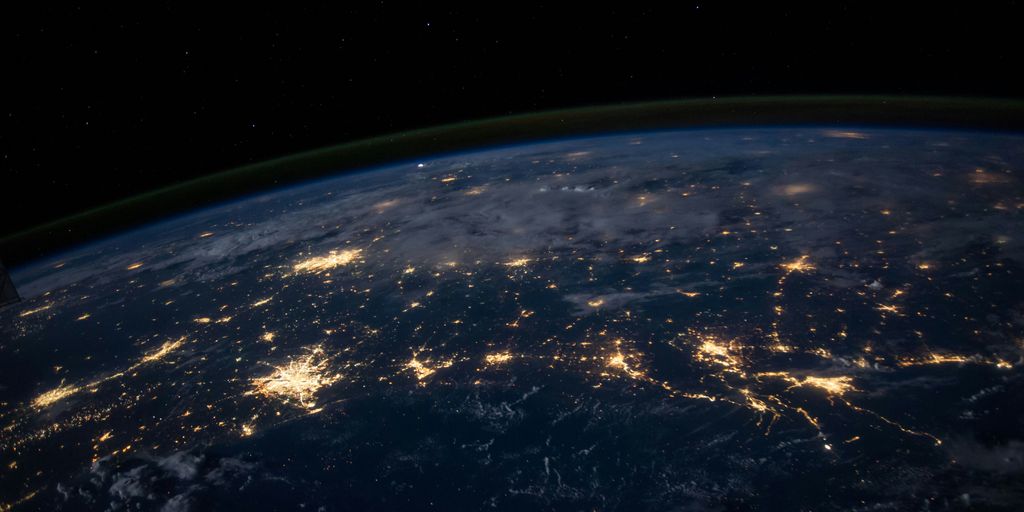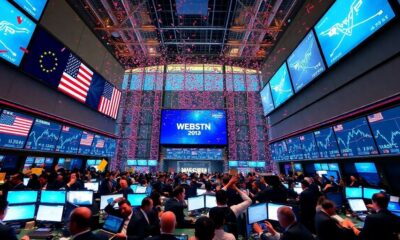World News
International News Reports: Key Global Developments and Their Impact

This article explores significant global events and their effects on various sectors, including economics, trade, and the environment. We will look at how these developments shape the world and impact everyday lives. From economic trends to the ongoing war in Ukraine, each topic reveals challenges and opportunities that countries face today.
Key Takeaways
- Global economic trends show that commodity prices are fluctuating, affecting many countries.
- The war in Ukraine disrupts trade, especially in food supplies, which raises concerns about global hunger.
- Developing economies struggle with debt and climate change, making recovery difficult.
- Rising energy prices are pushing countries to seek renewable solutions for a sustainable future.
- International aid is crucial, especially for small island nations facing climate threats.
Global Economic Trends and Their Implications

Commodity Markets Outlook
The global economic outlook shows that commodity markets are facing significant changes. Recent reports indicate a decline in investment among countries that export commodities. This shift is crucial as it affects prices and availability of essential goods worldwide.
| Commodity Type | Current Price | Change (%) |
|---|---|---|
| Oil | $80/barrel | -5% |
| Gold | $1,800/oz | +2% |
| Wheat | $250/ton | -3% |
Investment in Emerging Markets
Emerging markets are experiencing a mixed bag of investment trends. While some regions attract foreign capital, others struggle due to political instability and economic uncertainty. Investors are cautious, leading to fluctuating growth rates across these markets.
Global Financial Development
The latest insights into global financial development reveal that long-term finance is essential for sustainable growth. Countries that prioritize financial stability tend to see better economic outcomes.
The path to a stable economy requires strong financial systems that support growth and development.
In summary, understanding these trends is vital for grasping the broader implications for the global economy. The interplay between commodity prices, investment flows, and financial stability shapes the economic landscape we navigate today.
Impact of the War in Ukraine on International Trade
Black Sea Grain Initiative
The Black Sea Grain Initiative was created to help get Ukrainian grain back into the global market. This agreement is crucial for stabilizing food prices worldwide. It allows for the safe transport of grain and fertilizers, which are essential for many countries facing food shortages.
Maritime Trade Disruptions
The ongoing conflict has caused significant disruptions in maritime trade. Ports in Ukraine have been closed or damaged, leading to delays and increased shipping costs. This situation has made it harder for countries to import necessary goods, affecting economies around the world.
Global Food Security
The war has raised concerns about global food security. Many countries rely on Ukrainian grain, and the conflict has led to rising food prices. This situation threatens to push millions into hunger, especially in developing nations.
The war in Ukraine has created a ripple effect, impacting not just the countries involved but also economies far away. The interconnectedness of global trade means that disruptions in one area can lead to challenges in another.
Challenges Facing Developing Economies
Debt Management and Financial Analysis
Many developing countries are struggling with high debt levels. This situation is worsened by rising interest rates and inflation, which make it harder for these nations to manage their finances. The burden of debt is taking up a larger share of their budgets, limiting funds for essential services like education and healthcare.
Technical Cooperation Programs
To tackle these issues, many countries are seeking technical assistance. Programs aimed at improving skills and infrastructure can help nations better integrate into the global economy. By focusing on areas like trade and investment, these initiatives aim to boost economic growth and stability.
Climate Change Vulnerabilities
Developing economies are particularly vulnerable to climate change impacts. Extreme weather events can disrupt agriculture, leading to food shortages and economic instability. As these countries often lack the resources to adapt, the effects of climate change can exacerbate existing challenges, making recovery even more difficult.
The ongoing challenges faced by developing economies highlight the need for global cooperation. Without support, many nations may struggle to achieve sustainable growth and improve living conditions for their citizens.
| Indicator | 2020 (%) | 2021 (%) | 2022 (%) |
|---|---|---|---|
| Debt-to-GDP Ratio | 60 | 65 | 70 |
| Investment in Infrastructure | 3 | 4 | 5 |
| Climate Adaptation Funding | 1 | 1.5 | 2 |
Energy Crisis and Its Global Repercussions

Rising Energy Prices
The energy crisis has led to significant increases in energy prices worldwide. This surge affects not only households but also businesses, leading to higher costs of goods and services. The table below shows the average energy prices in selected regions:
| Region | Average Price (per kWh) | Year 2022 | Year 2023 |
|---|---|---|---|
| North America | $0.13 | $0.12 | $0.15 |
| Europe | $0.20 | $0.18 | $0.25 |
| Asia | $0.10 | $0.09 | $0.12 |
Renewable Energy Solutions
To combat the energy crisis, many countries are turning to renewable energy sources. These solutions not only help reduce dependency on fossil fuels but also promote sustainability. Investing in renewable energy is crucial for long-term energy security.
The shift towards renewable energy is not just a trend; it is a necessity for a sustainable future. Countries must prioritize this transition to ensure energy availability for all.
Global Energy Policies
Governments are implementing new policies to address the energy crisis. These policies aim to stabilize energy markets and encourage the use of cleaner energy sources. The focus is on creating a balanced approach that considers both economic growth and environmental protection. In this context, tech reviews of energy-efficient technologies are becoming increasingly important as they guide consumers and businesses in making informed choices.
International Aid and Development
Official Development Assistance Trends
International aid plays a crucial role in supporting developing countries. In recent years, the trends in official development assistance (ODA) have shown a shift towards more targeted support. This assistance is vital for countries facing economic challenges and helps them improve their infrastructure and services.
Gender-Related Aid
Aid focused on gender equality is becoming increasingly important. Programs that empower women and girls can lead to significant improvements in health, education, and economic growth. Investing in gender-related initiatives not only benefits individuals but also strengthens communities and nations.
Aid for Small Island Developing States
Small island developing states (SIDS) face unique challenges, including climate change and limited resources. Aid directed towards these nations is essential for their survival and development. Support for SIDS often includes funding for disaster resilience and sustainable development projects.
The effectiveness of international aid depends on collaboration and understanding the specific needs of each country.
| Year | Total ODA (in billion USD) | Gender-Related Aid (%) | Aid to SIDS (in million USD) |
|---|---|---|---|
| 2020 | 161 | 15 | 500 |
| 2021 | 175 | 18 | 600 |
| 2022 | 190 | 20 | 700 |
Global Poverty and Shared Prosperity
Poverty Trends and Data
Today, around 700 million people live in extreme poverty, surviving on less than $2.15 per day. This alarming statistic highlights the urgent need for effective policies to combat poverty globally. The trends show that while some regions are making progress, others are lagging behind, exacerbating inequalities.
Policies for Economic Equity
To address these disparities, governments and organizations are implementing various policies aimed at promoting economic equity. These include improving access to education, healthcare, and job opportunities for marginalized communities. Equitable growth is essential for lifting people out of poverty and ensuring that everyone benefits from economic advancements.
Impact of Global Crises on Poverty
Global crises, such as pandemics and conflicts, have a significant impact on poverty levels. They disrupt economies and can push vulnerable populations back into extreme poverty. The need for resilience in economic systems is more critical than ever to protect the most affected groups.
Addressing poverty requires a multi-faceted approach that combines immediate relief with long-term strategies for sustainable development.
| Year | Global Poverty Rate (%) | Extreme Poverty Rate (%) |
|---|---|---|
| 2015 | 10.1 | 10.0 |
| 2020 | 9.2 | 9.2 |
| 2023 | 8.4 | 7.9 |
Climate Change and Environmental Challenges
Coral Reef Destruction
Coral reefs are vital to marine life and coastal protection. The ongoing destruction of these ecosystems is alarming, as they support about 25% of all marine species. Rising ocean temperatures and acidification are major threats, leading to coral bleaching and habitat loss.
Climate-Induced Migration
As climate change worsens, many people are forced to leave their homes. This migration can lead to social and economic challenges in both the areas they leave and the places they move to. For instance, coastal communities are particularly vulnerable to rising sea levels, prompting residents to relocate inland.
Sustainable Development Goals
The United Nations has set Sustainable Development Goals (SDGs) to address climate change and its impacts. These goals aim to ensure a sustainable future for all, focusing on clean water, affordable energy, and climate action. Achieving these goals is crucial for global stability and prosperity.
Climate change is not just an environmental issue; it affects health, economies, and social structures worldwide. Addressing these challenges requires global cooperation and innovative solutions.
Conclusion
In summary, the global landscape is constantly changing, influenced by various events and trends. From economic challenges to environmental crises, these developments affect everyone, especially those in vulnerable communities. As nations work together to tackle these issues, it’s crucial to stay informed and engaged. Understanding how these global events impact our lives helps us prepare for the future. By supporting international cooperation and sustainable practices, we can contribute to a more stable and equitable world for all.
Frequently Asked Questions
What are the main global economic trends right now?
Currently, we see changes in commodity prices, shifts in investments towards emerging markets, and developments in global finance.
How is the war in Ukraine affecting international trade?
The war has disrupted grain exports and maritime trade, leading to concerns about global food security.
What challenges are developing economies facing?
Many developing countries are struggling with debt management, climate change impacts, and the need for technical cooperation.
What is causing the energy crisis worldwide?
Rising energy prices and the need for renewable energy solutions are major factors in the current global energy crisis.
How is international aid changing?
Aid trends show an increase in support for gender-related projects and assistance to small island nations.
What is the current state of global poverty?
Poverty levels are still high, with ongoing crises affecting efforts to improve economic equity.
-

 Home and Garden6 days ago
Home and Garden6 days agoTransform Your Space: A Guide to Minimalist House Interior Design in 2025
-

 Home & Family6 days ago
Home & Family6 days ago10 Essential Cleaning Hacks for Bathroom Surfaces You Need to Try
-

 Health & Fitness6 days ago
Health & Fitness6 days agoDiscovering the Best Multivitamin for Women Over 40: Essential Nutrients for Optimal Health
-

 Automotive5 days ago
Automotive5 days agoUnlocking Performance: Why the HP Spectre x360 is the Ultimate 2-in-1 Laptop for 2025
-

 Health & Fitness6 days ago
Health & Fitness6 days agoDiscover the Best Multivitamin for Women Over 40: A Comprehensive Guide to Optimal Health
-

 Crime6 days ago
Crime6 days agoExploring the Most Anticipated New True Crime Documentaries of 2025
-

 Business6 days ago
Business6 days agoMaximize Your Earnings with American Express High Yield Savings Accounts in 2025
-

 Gadgets & Electronics5 days ago
Gadgets & Electronics5 days agoTop 5 Unlocked Android Phones Under $100 for Budget Shoppers in 2025






































